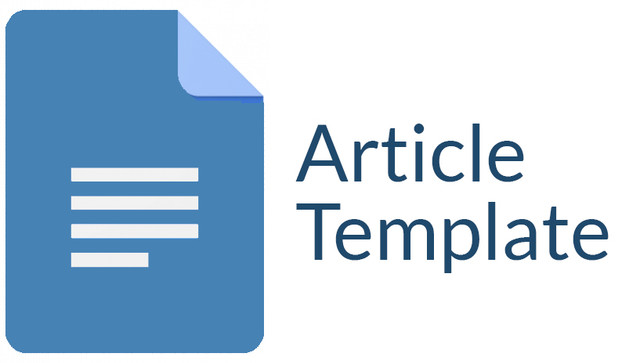Interactive Lecture Demonstrations (ILD) Model to Improve Students Understanding and Attitude towards Physics
DOI:
https://doi.org/10.30736/seaj.v4i1.525Keywords:
Keywords, ILD model, science magic, understanding aspect, attitude towards physicsAbstract
ILD learning design has been implemented to get an overview of improving in learning heat of understanding and the changing of attitude towards physics to student between a class that implemented ILD model with assisted science magic and a class that implemented ILD model without assisted science magic. The research method used was quasi experiment with nonequivalent pretest-posttest control group design. Two class of tenth grade were involved in this research 28, 26 students respectively experiment class and control class. The improvement of learning heat of understanding was calculated by the formula N gain based on the test data on the adaptation of Hake normalized and the changing of attitude towards physics by using CLASS questionnaire. The result show that gain average normalized  on experiment class got 0.55 while on control class got 0.31. Based on different test the average on experiment class and control class at 95% confidence level (significant 0.05) this result show that ILD model with assisted science magic significantly improve materials of student understanding better than ILD model without assisted science magic. Based on student questionnaire, we found that the implementation of ILD model with assisted science magic result the changing of attitude towards physics better than ILD model without assisted science magic.
Downloads
References
REFERENCES
National Research Council (NRC), National Science education Standards, Washington: National Academy Press, 1996.
A. Carin and B. Sund, Teaching Science Through Discovery Ohio, A Bell & Howell Company, 1997.
Nasution, Berbagai Pendekatan dalam Proses Belajar dan Mengajar, Jakarta: Bumi Aksara, 2005.
J. L. Lin, M. F. Cheng, H. L. Huang, Y. C. Chang, H. W. Li, and D. M. Lin, Learning Activities That Combine Science Magic Activities with The 5E Instructional Model to Influence Secondary-School Students’ Attitude to Science, Eurasia Journal of Mathematics, Science & Technology Education, 10 (5), 415-426, (2014).
R. Zimrot and G. Askenazi, Interactive Lecture Demonstrations: A Tool for Exploring and Enhancing Conceptual Change [Online] Chemistry Education Research and Practice, 8 (2), 197-211, (2007).
A. P. Mazzolini, S. Daniel and T. Edward, Using Interactive Lecture Demonstration to Improve Conceptual Understanding or Resonance in Electronics Course Australasian Journal of Engineering Education, 18 (1), 69-88 (2012).
G. Ashkenazi and G. C. Weaver, Interactive Lecture Demonstrations As A Context For Classroom Discussion: Effective Design and Presentation, Chemistry Education Research and Practice, 8. 186-196, (2007).
P. Wattanakasiwich, C. Khamcharean, P. Taleab, and M. Sharma, Interactive Lecture Demonstration in Thermodynamics, Lat. Am. J. Phys. Educ. Vol. 6, N0. 4. (Dec. 2012),
Zanaton and Lilia, Sikap Terhadap Sains dalam Kalangan Pelajar Sains Peringkat Menengah dan Matrikulasi Jurnal Pendidikan. ISSN: 0128-7702 (Universitas Kebangsaan Malaysia. Selangor, 2006).
L. W. Anderson and D. R. Krathwohl, A Taxonomy for Learning, Teaching, and Assessing: A Revision of Bloom’s Taxonomy of Educational Objectives, New York: Longman, 2001.
Sugiyono, Metode Penelitian Pendidikan (Pendekatan Kuantitatif, Kualitatif, dan R&D, Bandung: Alfabeta, 2015.
J. C. Arnold, K. Kremer, and J. Mayer , Understanding Students’ Experiments—What kind of support do they need in inquiry tasks? International Journal of Science Education. Advance online publication. doi: 10.1080/09500693.2014.930209, (2014).
J. McBride, Bhatti, M. A. Hannan, and M. Feinberg, Using an Inquiry Approach to Teach Science to Secondary school Science Teachers, Physics Education, 39 (5), 1-6, (2004).
S. Michaels, A. W. Shouse, and H. A. Schweingruber, Ready, Set, SCIENCE!: Putting Research to Work in K-8 Science Classrooms Washington D C: National Academies Press. Ministry of Education of Taiwan (MET) (2003). Grade 1-9 Curriculum Guidelines- Science and Technology (Taipei, Taiwan), 2008.
Z. Yakar and H. Baykara, Inquiry-Based Laboratory Practices in a Science Teacher Training Program, Eurasia Journal of Mathematics, Science & Technology Education. 10 (2), 173-183, (2014).
Chiaverina and Vollmer, Learning Physics from the Experiments: Workshop Report in Informal Learning and Public Understanding of Physics, 3rd International Girep Seminar, edited by G. Planinsic and A. Mohoric, pp. 185-190, (2005).
Downloads
Additional Files
Published
How to Cite
Issue
Section
License
Authors who publish with this journal agree to the following terms:
- Authors retain copyright and grant the journal right of first publication with the work simultaneously licensed under a Creative Commons Attribution-ShareAlike 4.0 International License that allows others to share the work with an acknowledgment of the work's authorship and initial publication in this journal.
- Authors are able to enter into separate, additional contractual arrangements for the non-exclusive distribution of the journal's published version of the work (e.g., post it to an institutional repository or publish it in a book), with an acknowledgment of its initial publication in this journal.
- Authors are permitted and encouraged to post their work online (e.g., in institutional repositories or on their website) prior to and during the submission process, as it can lead to productive exchanges, as well as earlier and greater citation of published work (See The Effect of Open Access).

This work is licensed under a Creative Commons Attribution-ShareAlike 4.0 International License.










